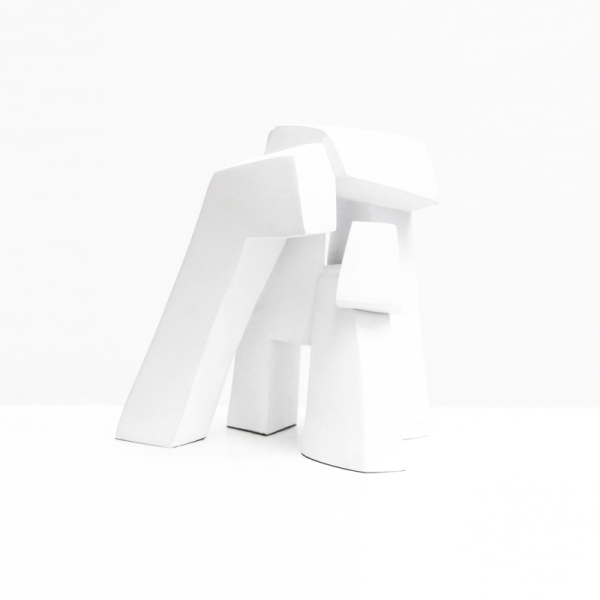
Find a very nice article about Parvine Curie’s personal exhibition at the Troyes museum in the magazine “Art Absolument” in the October-November issue.
—-
Awaiting the final reception of the work after four years of closure of the Museum of Modern Art, and Act I of the opening to the public of the new Impressionist collections room, Parvine Curie is back in Troyes for inaugurate the temporary exhibition space with the sobriety of its massive, smooth and black pieces, which are part of a part of post-modern sculpture that is too little shown and of which it is the ultimate living representative.
Extract from the article by Laurence d’Ist published in No. 108 of the Art Absolument magazine.
oeuvres
Cet artiste vous propose
-

PERSONNAGE CADAC White• Prestigious collectionParvine Curie
1200,00€Add to WishlistAdd to Wishlist -

PERSONNAGE CADAC Black• Prestigious collectionParvine Curie
1200,00€Add to WishlistAdd to Wishlist
l'artiste
Parvine Curie was born in Nancy in 1936, of French-Iranian origin. After her studies she left to visit Europe and decided to settle in Barcelona in 1957, discovering Catalan art. She practiced sculpture as an autodidact, following the advice of sculptor Marcel Marti with whom she had a son, David in 1959. In 1970, she moved to Paris and presented at the young sculpture salon, the work Première Mère, which marked the sculptor François Stahly. He invites her to come and work alongside him at the collective workshop in Crestet (Vaucluse). Parvine learns the basics of the trade, sculpts wood and stone. She married Stahly in 1975 and subsequently carried out numerous public commissions. Her work, which was initially more hieratic, then evolved into a more dynamic style. Her sculptures, between figures and architecture, and strongly inspired by the places she visited, are marked by pure lines and materials and testify to her constant desire to question space and light.


